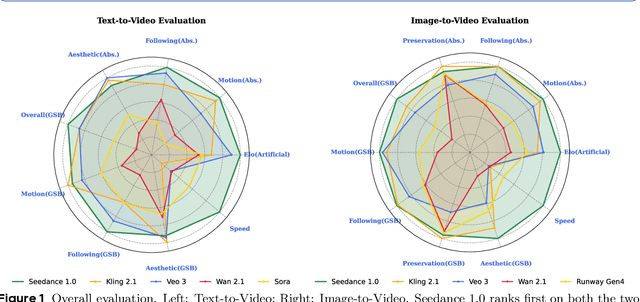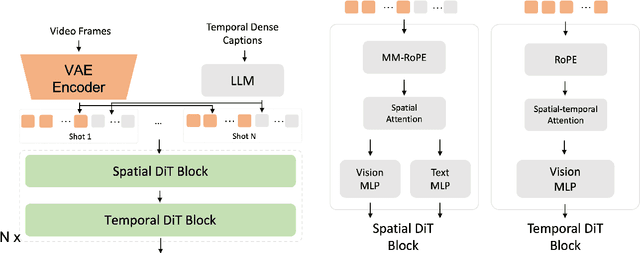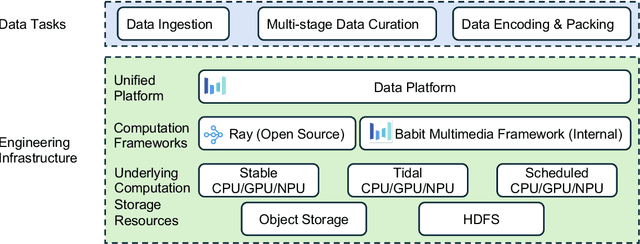Shu Liu
Establishing Best Practices for Building Rigorous Agentic Benchmarks
Jul 03, 2025Abstract:Benchmarks are essential for quantitatively tracking progress in AI. As AI agents become increasingly capable, researchers and practitioners have introduced agentic benchmarks to evaluate agents on complex, real-world tasks. These benchmarks typically measure agent capabilities by evaluating task outcomes via specific reward designs. However, we show that many agentic benchmarks have issues task setup or reward design. For example, SWE-bench Verified uses insufficient test cases, while TAU-bench counts empty responses as successful. Such issues can lead to under- or overestimation agents' performance by up to 100% in relative terms. To make agentic evaluation rigorous, we introduce the Agentic Benchmark Checklist (ABC), a set of guidelines that we synthesized from our benchmark-building experience, a survey of best practices, and previously reported issues. When applied to CVE-Bench, a benchmark with a particularly complex evaluation design, ABC reduces the performance overestimation by 33%.
Hunyuan3D 2.1: From Images to High-Fidelity 3D Assets with Production-Ready PBR Material
Jun 18, 2025Abstract:3D AI-generated content (AIGC) is a passionate field that has significantly accelerated the creation of 3D models in gaming, film, and design. Despite the development of several groundbreaking models that have revolutionized 3D generation, the field remains largely accessible only to researchers, developers, and designers due to the complexities involved in collecting, processing, and training 3D models. To address these challenges, we introduce Hunyuan3D 2.1 as a case study in this tutorial. This tutorial offers a comprehensive, step-by-step guide on processing 3D data, training a 3D generative model, and evaluating its performance using Hunyuan3D 2.1, an advanced system for producing high-resolution, textured 3D assets. The system comprises two core components: the Hunyuan3D-DiT for shape generation and the Hunyuan3D-Paint for texture synthesis. We will explore the entire workflow, including data preparation, model architecture, training strategies, evaluation metrics, and deployment. By the conclusion of this tutorial, you will have the knowledge to finetune or develop a robust 3D generative model suitable for applications in gaming, virtual reality, and industrial design.
Seedance 1.0: Exploring the Boundaries of Video Generation Models
Jun 10, 2025



Abstract:Notable breakthroughs in diffusion modeling have propelled rapid improvements in video generation, yet current foundational model still face critical challenges in simultaneously balancing prompt following, motion plausibility, and visual quality. In this report, we introduce Seedance 1.0, a high-performance and inference-efficient video foundation generation model that integrates several core technical improvements: (i) multi-source data curation augmented with precision and meaningful video captioning, enabling comprehensive learning across diverse scenarios; (ii) an efficient architecture design with proposed training paradigm, which allows for natively supporting multi-shot generation and jointly learning of both text-to-video and image-to-video tasks. (iii) carefully-optimized post-training approaches leveraging fine-grained supervised fine-tuning, and video-specific RLHF with multi-dimensional reward mechanisms for comprehensive performance improvements; (iv) excellent model acceleration achieving ~10x inference speedup through multi-stage distillation strategies and system-level optimizations. Seedance 1.0 can generate a 5-second video at 1080p resolution only with 41.4 seconds (NVIDIA-L20). Compared to state-of-the-art video generation models, Seedance 1.0 stands out with high-quality and fast video generation having superior spatiotemporal fluidity with structural stability, precise instruction adherence in complex multi-subject contexts, native multi-shot narrative coherence with consistent subject representation.
LEANN: A Low-Storage Vector Index
Jun 09, 2025Abstract:Embedding-based search is widely used in applications such as recommendation and retrieval-augmented generation (RAG). Recently, there is a growing demand to support these capabilities over personal data stored locally on devices. However, maintaining the necessary data structure associated with the embedding-based search is often infeasible due to its high storage overhead. For example, indexing 100 GB of raw data requires 150 to 700 GB of storage, making local deployment impractical. Reducing this overhead while maintaining search quality and latency becomes a critical challenge. In this paper, we present LEANN, a storage-efficient approximate nearest neighbor (ANN) search index optimized for resource-constrained personal devices. LEANN combines a compact graph-based structure with an efficient on-the-fly recomputation strategy to enable fast and accurate retrieval with minimal storage overhead. Our evaluation shows that LEANN reduces index size to under 5% of the original raw data, achieving up to 50 times smaller storage than standard indexes, while maintaining 90% top-3 recall in under 2 seconds on real-world question answering benchmarks.
ARPO:End-to-End Policy Optimization for GUI Agents with Experience Replay
May 22, 2025Abstract:Training large language models (LLMs) as interactive agents for controlling graphical user interfaces (GUIs) presents a unique challenge to optimize long-horizon action sequences with multimodal feedback from complex environments. While recent works have advanced multi-turn reinforcement learning (RL) for reasoning and tool-using capabilities in LLMs, their application to GUI-based agents remains relatively underexplored due to the difficulty of sparse rewards, delayed feedback, and high rollout costs. In this paper, we investigate end-to-end policy optimization for vision-language-based GUI agents with the aim of improving performance on complex, long-horizon computer tasks. We propose Agentic Replay Policy Optimization (ARPO), an end-to-end RL approach that augments Group Relative Policy Optimization (GRPO) with a replay buffer to reuse the successful experience across training iterations. To further stabilize the training process, we propose a task selection strategy that filters tasks based on baseline agent performance, allowing the agent to focus on learning from informative interactions. Additionally, we compare ARPO with offline preference optimization approaches, highlighting the advantages of policy-based methods in GUI environments. Experiments on the OSWorld benchmark demonstrate that ARPO achieves competitive results, establishing a new performance baseline for LLM-based GUI agents trained via reinforcement learning. Our findings underscore the effectiveness of reinforcement learning for training multi-turn, vision-language GUI agents capable of managing complex real-world UI interactions. Codes and models:https://github.com/dvlab-research/ARPO.git.
Accelerated Markov Chain Monte Carlo Algorithms on Discrete States
May 19, 2025Abstract:We propose a class of discrete state sampling algorithms based on Nesterov's accelerated gradient method, which extends the classical Metropolis-Hastings (MH) algorithm. The evolution of the discrete states probability distribution governed by MH can be interpreted as a gradient descent direction of the Kullback--Leibler (KL) divergence, via a mobility function and a score function. Specifically, this gradient is defined on a probability simplex equipped with a discrete Wasserstein-2 metric with a mobility function. This motivates us to study a momentum-based acceleration framework using damped Hamiltonian flows on the simplex set, whose stationary distribution matches the discrete target distribution. Furthermore, we design an interacting particle system to approximate the proposed accelerated sampling dynamics. The extension of the algorithm with a general choice of potentials and mobilities is also discussed. In particular, we choose the accelerated gradient flow of the relative Fisher information, demonstrating the advantages of the algorithm in estimating discrete score functions without requiring the normalizing constant and keeping positive probabilities. Numerical examples, including sampling on a Gaussian mixture supported on lattices or a distribution on a hypercube, demonstrate the effectiveness of the proposed discrete-state sampling algorithm.
VisionReasoner: Unified Visual Perception and Reasoning via Reinforcement Learning
May 17, 2025Abstract:Large vision-language models exhibit inherent capabilities to handle diverse visual perception tasks. In this paper, we introduce VisionReasoner, a unified framework capable of reasoning and solving multiple visual perception tasks within a shared model. Specifically, by designing novel multi-object cognitive learning strategies and systematic task reformulation, VisionReasoner enhances its reasoning capabilities to analyze visual inputs, and addresses diverse perception tasks in a unified framework. The model generates a structured reasoning process before delivering the desired outputs responding to user queries. To rigorously assess unified visual perception capabilities, we evaluate VisionReasoner on ten diverse tasks spanning three critical domains: detection, segmentation, and counting. Experimental results show that VisionReasoner achieves superior performance as a unified model, outperforming Qwen2.5VL by relative margins of 29.1% on COCO (detection), 22.1% on ReasonSeg (segmentation), and 15.3% on CountBench (counting).
Seaweed-7B: Cost-Effective Training of Video Generation Foundation Model
Apr 11, 2025Abstract:This technical report presents a cost-efficient strategy for training a video generation foundation model. We present a mid-sized research model with approximately 7 billion parameters (7B) called Seaweed-7B trained from scratch using 665,000 H100 GPU hours. Despite being trained with moderate computational resources, Seaweed-7B demonstrates highly competitive performance compared to contemporary video generation models of much larger size. Design choices are especially crucial in a resource-constrained setting. This technical report highlights the key design decisions that enhance the performance of the medium-sized diffusion model. Empirically, we make two observations: (1) Seaweed-7B achieves performance comparable to, or even surpasses, larger models trained on substantially greater GPU resources, and (2) our model, which exhibits strong generalization ability, can be effectively adapted across a wide range of downstream applications either by lightweight fine-tuning or continue training. See the project page at https://seaweed.video/
Fùxì: A Benchmark for Evaluating Language Models on Ancient Chinese Text Understanding and Generation
Mar 20, 2025Abstract:Ancient Chinese text processing presents unique challenges for large language models (LLMs) due to its distinct linguistic features, complex structural constraints, and rich cultural context. While existing benchmarks have primarily focused on evaluating comprehension through multiple-choice questions, there remains a critical gap in assessing models' generative capabilities in classical Chinese. We introduce F\`ux\`i, a comprehensive benchmark that evaluates both understanding and generation capabilities across 21 diverse tasks. Our benchmark distinguishes itself through three key contributions: (1) balanced coverage of both comprehension and generation tasks, including novel tasks like poetry composition and couplet completion, (2) specialized evaluation metrics designed specifically for classical Chinese text generation, combining rule-based verification with fine-tuned LLM evaluators, and (3) a systematic assessment framework that considers both linguistic accuracy and cultural authenticity. Through extensive evaluation of state-of-the-art LLMs, we reveal significant performance gaps between understanding and generation tasks, with models achieving promising results in comprehension but struggling considerably in generation tasks, particularly those requiring deep cultural knowledge and adherence to classical formats. Our findings highlight the current limitations in ancient Chinese text processing and provide insights for future model development. The benchmark, evaluation toolkit, and baseline results are publicly available to facilitate research in this domain.
STEVE: AStep Verification Pipeline for Computer-use Agent Training
Mar 16, 2025Abstract:Developing AI agents to autonomously manipulate graphical user interfaces is a long challenging task. Recent advances in data scaling law inspire us to train computer-use agents with a scaled instruction set, yet using behavior cloning to train agents still requires immense high-quality trajectories. To meet the scalability need, we designed STEVE, a step verification pipeline for computer-use agent training. First, we establish a large instruction set for computer-use agents and collect trajectory data with some suboptimal agents. GPT-4o is used to verify the correctness of each step in the trajectories based on the screens before and after the action execution, assigning each step with a binary label. Last, we adopt the Kahneman and Tversky Optimization to optimize the agent from the binary stepwise labels. Extensive experiments manifest that our agent outperforms supervised finetuning by leveraging both positive and negative actions within a trajectory. Also, STEVE enables us to train a 7B vision-language model as a computer-use agent, achieving leading performance in the challenging live desktop environment WinAgentArena with great efficiency at a reduced cost. Code and data: https://github.com/FanbinLu/STEVE.
 Add to Chrome
Add to Chrome Add to Firefox
Add to Firefox Add to Edge
Add to Edge